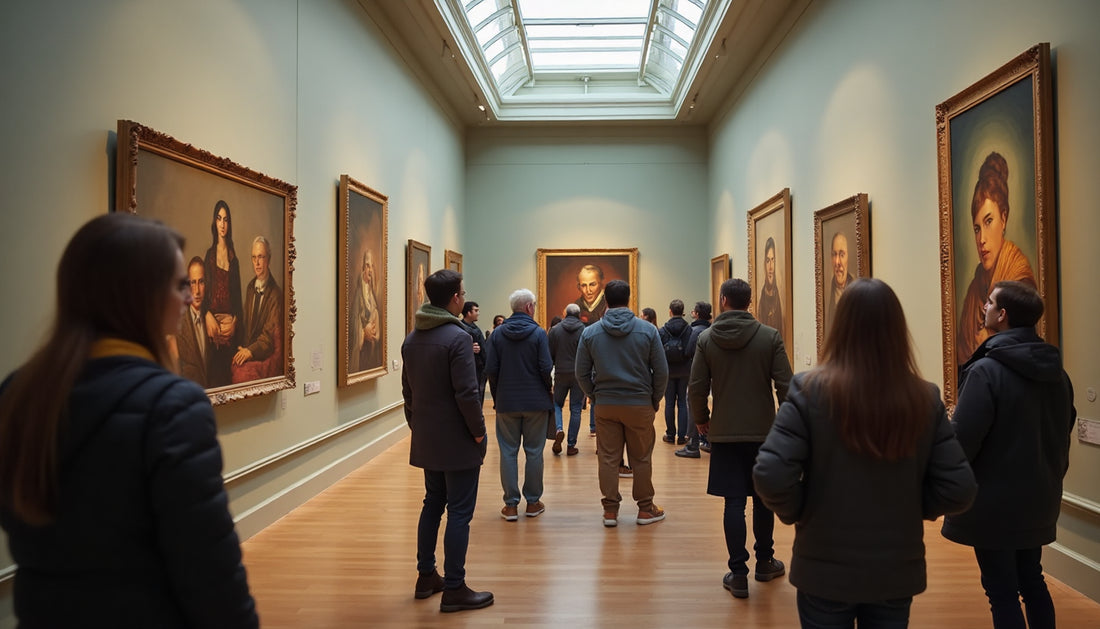
Portrait Art History: From Classics to Modern Canvas (2025)
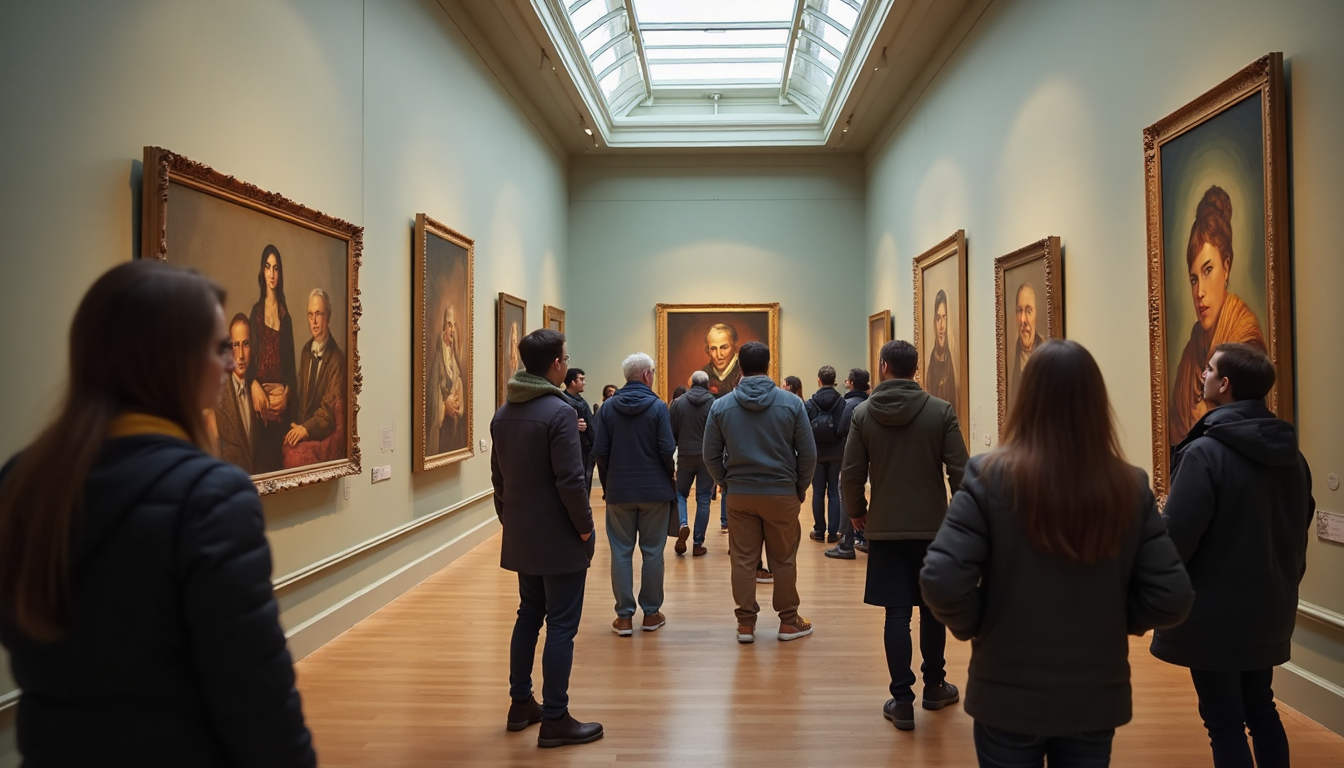
Portrait art has been shaping how we see ourselves for thousands of years. While you might think the classic Mona Lisa or a modern selfie tells the whole story, there is so much more to it. Color alone accounts for a staggering 73 percent of our aesthetic appreciation of a portrait, proving that what grabs your heart usually isn’t about the face at all.
Table of Contents
- The Origins And Evolution Of Portrait Art
- Famous Portraits And Their Cultural Impact
- Modern And Abstract Trends In Portrait Art
- Choosing Portrait Art For Wall Decor And Gifts
Quick Summary
| Takeaway | Explanation |
|---|---|
| The Evolution of Portrait Art | Portrait art has evolved from ancient symbolic representations to a modern exploration of individuality and cultural context, reflecting complex narratives across different eras. |
| Impact of Color and Aesthetics | Color plays a crucial role in how portrait art is perceived, influencing emotional responses and aesthetic appreciation, which is vital for selecting artwork. |
| Cultural and Social Commentary | Iconic portraits serve as cultural artifacts that communicate complex human experiences and social commentary, highlighting broader societal narratives beyond mere likeness. |
| Understanding Modern Techniques | Contemporary portraiture now incorporates innovative techniques like abstraction and technology, inviting deeper engagement with issues of identity and human experience. |
| Personalized Art Selection | Choosing portrait art should focus not only on visual appeal but also on emotional resonance, symmetry, and the narrative the artwork conveys, making it a meaningful addition to any space. |
The Origins and Evolution of Portrait Art
Portrait art represents a profound human desire to capture and immortalize individual identity through visual representation. From ancient civilizations to contemporary artistic expressions, portraiture has served as a powerful medium for recording human experiences, social status, and personal narratities.
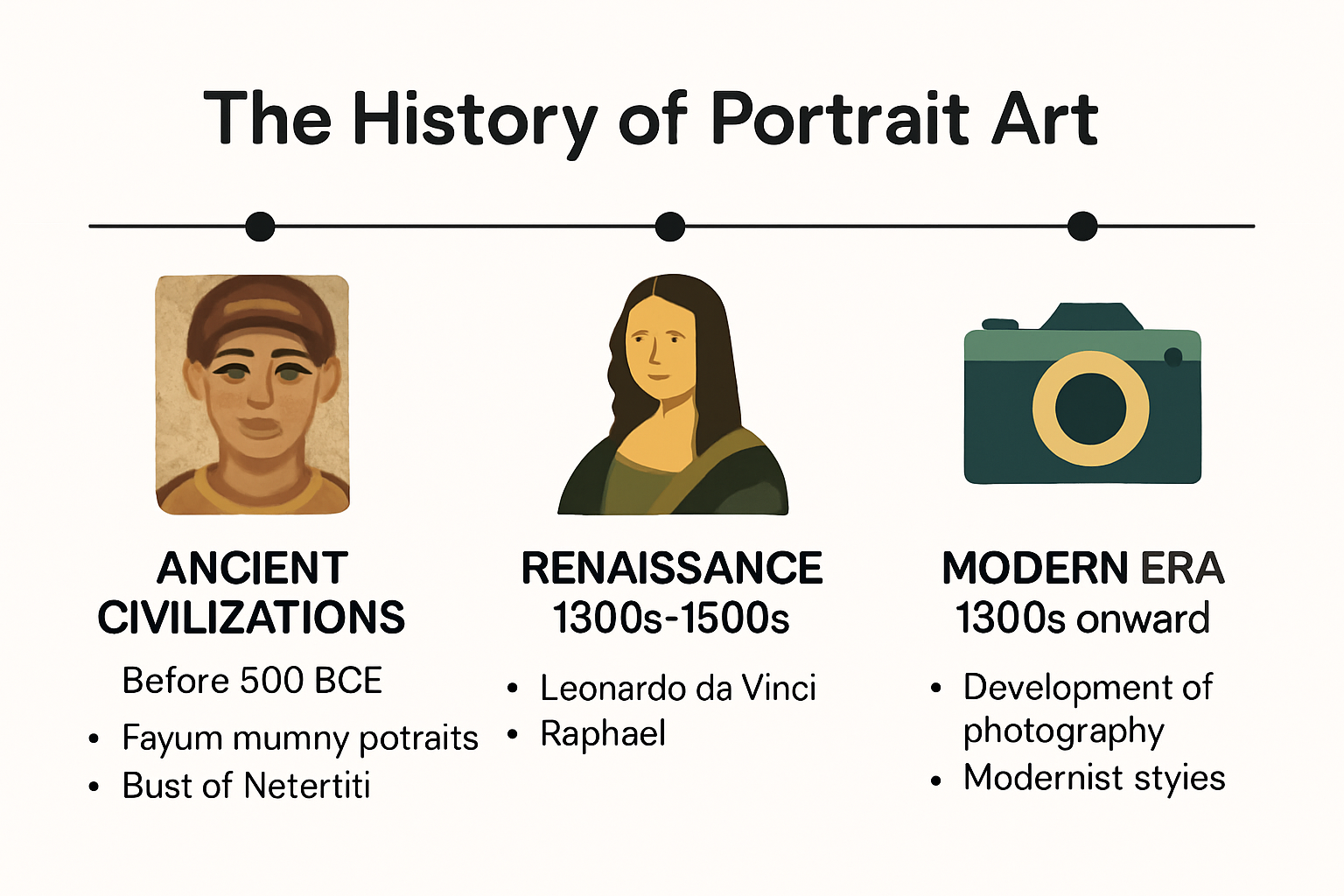
Ancient Roots of Human Representation
The earliest known portrait art emerged from ancient civilizations with deep symbolic significance. Ancient Egyptian portraiture offers a remarkable example of this human impulse. The Fayum mummy portraits from the 1st to 3rd centuries AD demonstrate an extraordinary practice of creating wooden panel paintings attached to mummies. These portraits were not merely decorative but represented a spiritual connection, designed to preserve an individual’s essence for the afterlife.
In Mesopotamia and early Greek cultures, portrait art initially served commemorative and religious purposes. Sculptors and painters created representations of rulers, deities, and important social figures that communicated power, status, and cultural narratives. These early portraits were less about individual psychological representation and more about symbolic representation of societal roles.
Renaissance: The Transformation of Portraiture
The Renaissance period marked a revolutionary shift in portrait art history. Artists like Leonardo da Vinci and Raphael transformed portraiture from symbolic representation to a nuanced exploration of human individuality. Oil painting techniques enabled artists to capture intricate facial expressions, subtle emotional depths, and personal characteristics with unprecedented realism.
Masterpieces such as the “Mona Lisa” exemplified this new approach, where the subject’s inner world became as important as their external appearance. Portraits began to reveal psychological complexity, moving beyond mere physical likeness to explore the subject’s inner emotions, social context, and personal narrative.
Modern and Contemporary Perspectives
The advent of photography in the 20th century fundamentally transformed portrait art. Photographers like Richard Avedon and Diane Arbus expanded the genre’s boundaries, using portraiture to explore deeper societal themes and individual human experiences. These artists demonstrated that a portrait could be more than a faithful reproduction—it could be a critical commentary on identity, social structures, and human vulnerability.
Contemporary portrait artists continue to push these boundaries, incorporating digital technologies, mixed media, and conceptual approaches that challenge traditional representation. They explore themes of identity, gender, race, and personal experience, transforming portraiture into a dynamic form of social and personal expression.
Today, portrait art remains a compelling medium for understanding human complexity. From ancient Egyptian panels to digital art installations, portraits continue to offer profound insights into individual and collective human experiences, bridging personal narratives with broader cultural contexts.
To help clarify the progression of portrait art through history, the following table summarizes key periods, notable artists, and the cultural significance of their work:
| Period | Notable Artists | Key Features/Impact |
|---|---|---|
| Ancient Civilizations | Unknown (Egyptian, Mesopotamian) | Symbolic spiritual representation, social status, connection to afterlife |
| Renaissance | Leonardo da Vinci, Raphael, Vermeer | Individuality, emotional depth, psychological complexity |
| 18th Century | Élisabeth Vigée Le Brun | Social documentation, transition between Rococo and Neoclassicism |
| 20th Century (Photography) | Richard Avedon, Diane Arbus | Societal themes, human vulnerability, critical commentary |
| Modern & Contemporary | Frida Kahlo, Kehinde Wiley, Cindy Sherman | Identity, abstraction, technology integration, social critique |
Famous Portraits and Their Cultural Impact
Portraiture has the remarkable ability to transcend time, capturing not just individual likenesses but entire cultural moments and societal transformations. Throughout art history, certain portraits have become iconic representations that define entire artistic movements and reflect complex social narratives.
Renaissance Masterpieces and Psychological Depth
Leonardo da Vinci’s “Mona Lisa” represents a pinnacle of Renaissance portraiture, revolutionizing artistic representation through its innovative sfumato technique. This method of creating soft color transitions produces an almost lifelike quality, making the subject’s enigmatic smile and penetrating gaze a subject of endless fascination. The portrait transcends mere representation, becoming a profound exploration of human complexity and artistic innovation.
Johannes Vermeer’s “Girl with a Pearl Earring” exemplifies another remarkable Renaissance portrait. Using chiaroscuro techniques, Vermeer creates dramatic three-dimensionality, transforming a seemingly simple portrait into a powerful emotional statement. The painting’s luminous quality and the subject’s arresting gaze invite viewers into an intimate, contemplative space.
Portraiture as Social Commentary
Élisabeth Vigée Le Brun, a prominent French portrait painter of the late 18th century, offers a fascinating example of portraiture as social documentation. Her portraits of Marie Antoinette and European aristocracy captured more than individual likenesses—they represented the complex social transitions between Rococo and Neoclassical artistic styles. Le Brun’s work not only showcased her exceptional technical skill but also provided nuanced insights into the social hierarchies and aesthetic preferences of her era.
Portraits during this period were not merely decorative but powerful statements of social status, personal identity, and cultural sophistication. Artists like Le Brun used portraiture to negotiate complex social narratives, revealing the intricate relationships between individual representation and broader societal structures.
Modern Portraiture and Global Perspectives
In the 20th century, portrait art expanded beyond traditional European perspectives. Frida Kahlo’s self-portraits, for instance, transformed personal pain and cultural identity into powerful artistic statements. Her work challenged conventional artistic representation by incorporating Mexican folk art traditions, personal symbolism, and unflinching self-examination.
Contemporary portrait artists continue to push boundaries, using portraiture as a medium for exploring complex themes of identity, race, gender, and global interconnectedness. Artists like Kehinde Wiley have reimagined portraiture by placing contemporary Black subjects in classical European painting compositions, challenging historical artistic narratives and centering marginalized experiences.
These iconic portraits demonstrate that great portraiture is never just about capturing a physical likeness. Instead, they are profound cultural artifacts that communicate complex human experiences, challenge societal norms, and invite viewers to see the world through different perspectives. Each portrait tells a story far beyond its visual representation—a testament to art’s power to preserve, challenge, and transform our understanding of human experience.
Modern and Abstract Trends in Portrait Art
Modern portrait art represents a radical departure from traditional representational techniques, challenging viewers to reconsider the fundamental nature of human identity and visual representation. Contemporary artists are transforming portraiture into a dynamic medium that explores complex psychological, social, and technological landscapes.
Deconstructing Human Identity
The Museum of Modern Art’s exhibition “Vital Signs: Artists and the Body” highlights how contemporary artists utilize abstraction to explore profound themes of human experience. Modern abstract portraiture moves beyond physical likeness, instead focusing on emotional states, internal experiences, and the fluid nature of personal identity.
Artists like Cindy Sherman have pioneered this approach, using self-portraiture to deconstruct societal expectations of gender, representation, and personal narrative. Her work demonstrates how abstract techniques can reveal more about human complexity than traditional realistic depictions. By fragmenting, distorting, and reimagining the human form, these artists invite viewers to engage with identity as a multifaceted, ever-changing concept.
Technological Integration and Artistic Innovation
Artificial intelligence has dramatically expanded the boundaries of portrait art, introducing unprecedented methods of visual exploration. AI-generated portraits challenge traditional notions of artistic creation, blending algorithmic precision with creative interpretation. These technological approaches allow artists to generate portraits that reveal hidden psychological dimensions, creating visual representations that transcend human perceptual limitations.
Interestingly, psychological research suggests that individuals with higher openness to experience demonstrate greater appreciation for abstract artistic expressions. This indicates that modern abstract portraiture appeals to viewers who are willing to embrace complexity and challenge conventional visual narratives.
Global Perspectives and Cultural Reimagination
Contemporary abstract portraiture has become a powerful tool for cultural commentary and personal exploration. Artists like Kehinde Wiley and Yinka Shonibare use abstraction to challenge historical artistic representations, recentering marginalized experiences and reimagining cultural narratives. Their work demonstrates how abstract techniques can deconstruct colonial visual traditions and create space for diverse perspectives.
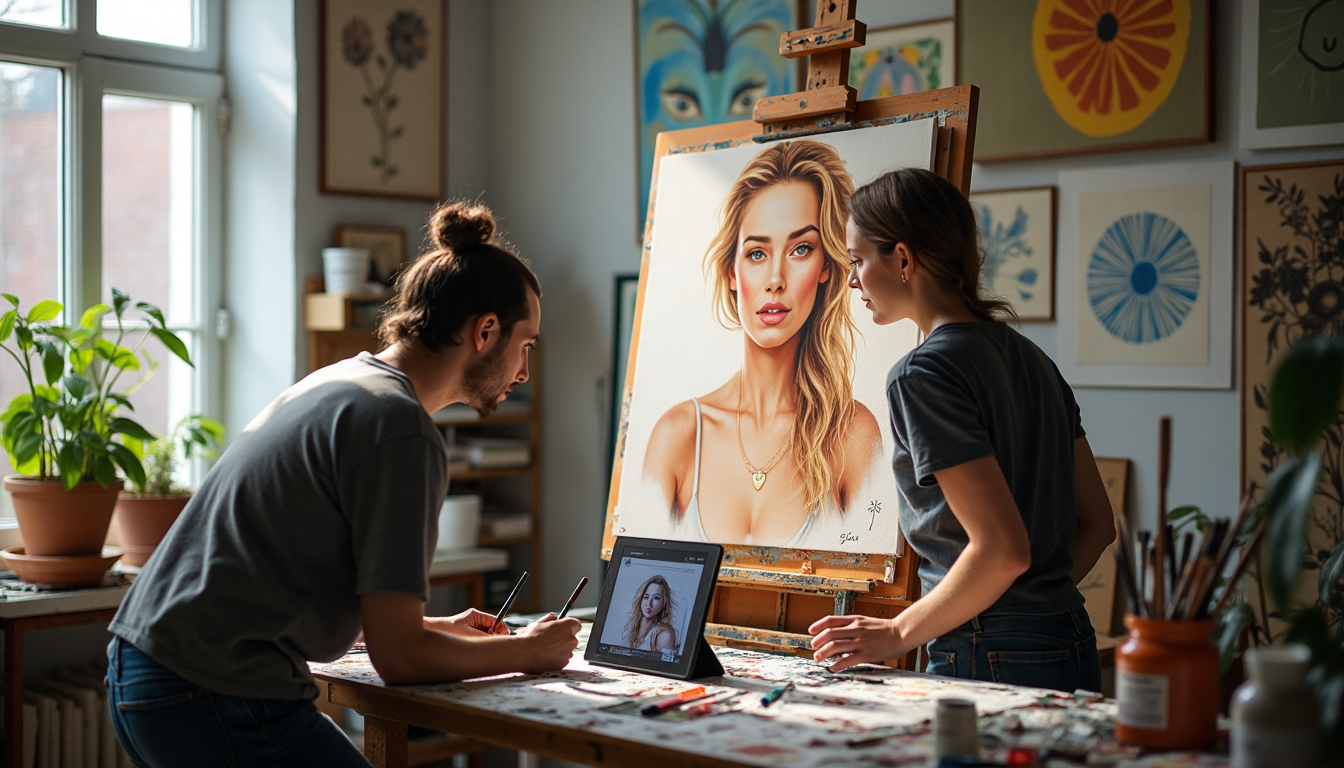
These artists utilize techniques such as fragmentation, color manipulation, and symbolic representation to communicate complex cultural experiences. Abstract portraiture becomes a language of resistance, allowing artists to express identities that have been historically suppressed or misrepresented.
Modern abstract portrait art represents more than an aesthetic movement—it is a profound philosophical exploration of human experience. By breaking traditional representational boundaries, contemporary artists invite viewers to reconsider what portraiture can communicate. Explore our curated collection of modern canvas art to witness how these innovative approaches are transforming visual storytelling in the 21st century.
The future of portrait art lies not in perfect reproduction, but in its ability to challenge, provoke, and expand our understanding of human complexity. Abstract portraiture offers a mirror that reflects not just physical appearance, but the intricate, multidimensional nature of personal and collective identity.
Choosing Portrait Art for Wall Decor and Gifts
Selecting the perfect portrait art requires a nuanced understanding of personal aesthetics, emotional resonance, and spatial design. Whether for personal enjoyment or as a meaningful gift, portrait art represents a profound way to express individual taste and connect with visual storytelling.
Color and Emotional Resonance
Scientific research reveals that color plays a crucial role in artwork perception, demonstrating how specific color combinations can dramatically influence emotional responses. Artists and collectors understand that portrait art is not just about representation but about creating an emotional landscape that transforms living spaces.
Research analyzing paintings from the 15th to 20th centuries found a remarkable 73% correlation between color features and aesthetic appreciation. This means the colors within a portrait can significantly impact its visual appeal and emotional impact. Warm tones might evoke comfort and intimacy, while cool blues and grays can create a sense of calm and contemplation.
Aesthetic Considerations and Symmetry
Psychological studies demonstrate humans have an innate preference for symmetrical patterns, which plays a critical role in art selection. Symmetry in portrait art can enhance perceived beauty and create a sense of balance that resonates with viewers. When choosing a portrait, consider how the composition’s balance contributes to its overall aesthetic appeal.
Beyond symmetry, consider the artwork’s ability to communicate a narrative. A compelling portrait transcends mere visual representation, telling a story that connects with the viewer’s personal experiences or aspirations. Our comprehensive guide on selecting wall art can help you navigate these nuanced selection criteria.
Contextual and Personal Significance
Portrait art serves multiple purposes beyond decoration. It can be a conversation starter, a personal statement, or a meaningful gift that reflects deep understanding of an individual’s personality or journey. When selecting a portrait, consider these key factors:
- Emotional Connection: Choose artwork that resonates with personal experiences or aspirations.
- Space Compatibility: Consider the artwork’s size, color palette, and style in relation to existing decor.
- Artistic Technique: Appreciate the skill and unique perspective of the artist.
Storytelling through art becomes particularly powerful when the portrait reflects complex human experiences. A well-chosen portrait can transform a space, offering a window into emotional landscapes and personal narratives.
To help readers choose portrait art that aligns with their needs and preferences, the following table presents key factors and tips to consider when making a selection:
| Selection Factor | Why It Matters | Tips for Buyers |
|---|---|---|
| Color & Palette | Strongly influences emotional response and visual appeal | Match color scheme to space; consider mood evoked |
| Emotional Connection | Ensures artwork resonates personally or with recipient | Pick pieces reflecting experiences or aspirations |
| Symmetry & Composition | Creates balance and perceived beauty in the artwork | Choose art with pleasing symmetry or intentional balance |
| Size & Compatibility | Affects how well art fits and enhances the space | Measure wall area; coordinate with existing decor |
| Artistic Technique | Adds depth, uniqueness, and value to the piece | Appreciate different mediums, styles, and artists’ skills |
| Narrative Significance | Makes the portrait meaningful and a conversation starter | Select art that tells a story or represents deeper meaning |
| Contextual Use (Gift/Decor) | Determines appropriateness and impact as decor or gift | Personalize selection for recipient or intended room |
Ultimately, selecting portrait art is a deeply personal journey. It’s about finding a piece that speaks to you—a visual representation that captures imagination, evokes emotion, and creates a lasting connection. Whether you’re drawn to classical realism, abstract interpretation, or contemporary styles, the right portrait art can turn any space into a profound expression of individual identity and aesthetic sensibility.
Frequently Asked Questions
What is the significance of color in portrait art?
Color plays a crucial role in portrait art, accounting for about 73% of aesthetic appreciation. Specific color combinations can evoke emotional responses and influence how a portrait is perceived.
How has portrait art evolved over the centuries?
Portrait art has evolved from ancient symbolic representations to a nuanced exploration of individuality during the Renaissance, and into modern interpretations that incorporate abstraction, technology, and cultural reimagination.
What are some famous portraits that have had a cultural impact?
Famous portraits such as Leonardo da Vinci’s “Mona Lisa” and Élisabeth Vigée Le Brun’s depictions of Marie Antoinette not only showcase artistic talent but also reflect significant cultural narratives and social commentary of their times.
How can I choose portrait art for my home or as a gift?
When selecting portrait art, consider factors like color, emotional resonance, symmetry, and the narrative the artwork conveys. It’s essential to choose a piece that fits the space and resonates personally with the viewer or the recipient.
Transform Your Love for Portrait Art into a Personal Collection
It can be overwhelming to find portrait art that not only reflects history and personal stories but also fits your own space and emotional style. Many readers ask how to bring meaningful works—rich in color, symmetry, and narrative—into their everyday life. If you want art that goes beyond simple decoration, expressing individuality and connecting with deeper human experiences, you are not alone. Choosing the perfect piece of wall decor that truly speaks to you often feels challenging.
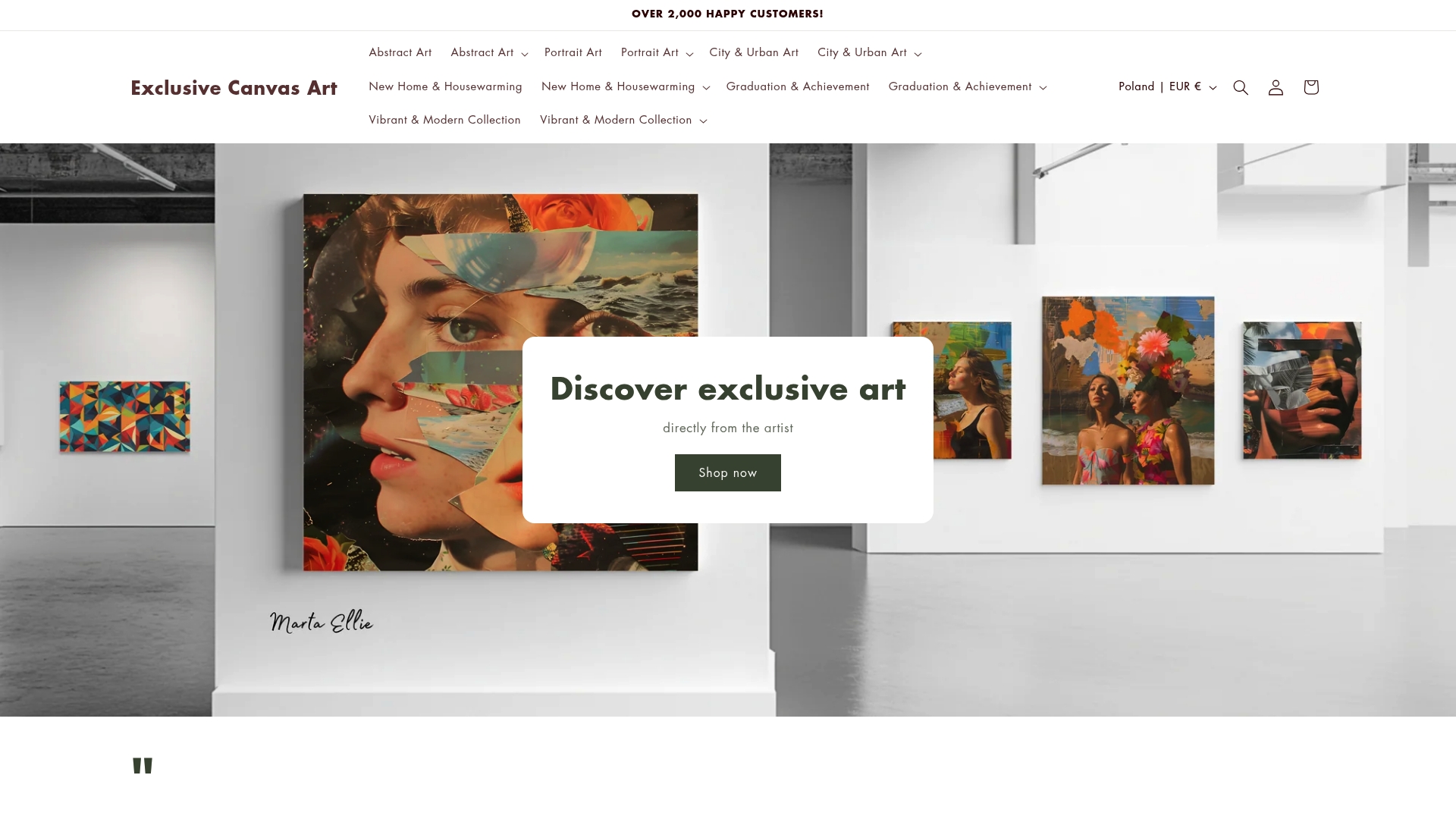
Discover how Marta Ellie’s exclusive canvas collections can solve this challenge. Each artwork blends classic techniques and modern creativity, bringing the same depth and emotion discussed in our exploration of portrait art history. Shop unique portrait pieces designed to evoke feeling, tell a story, and transform your space. Visit Marta Ellie’s Art Store now and find your statement piece while supplies last. Own a print that connects the beauty of the past with your life today.
Recommended
- Canvas Art Meaning: Modern Decor & Artistic Value in 2025 – Exclusive Canvas Art
- How to Store Canvas: Protect Modern Art & Luxury Prints 2025 – Exclusive Canvas Art
- Living Room Wall Art Trends 2025: Modern Canvas and Print Ideas – Exclusive Canvas Art
- What Is Canvas Print? Modern Wall Art for Stylish Spaces 2025 – Exclusive Canvas Art
- Storytelling Through Art: Wall Decor Ideas for 2025 Collectors – Exclusive Canvas Art
- How to Display Canvas Prints: Fresh Ideas for Modern Walls 2025 – Exclusive Canvas Art